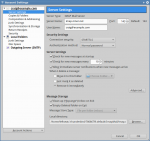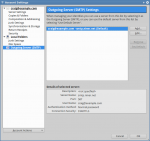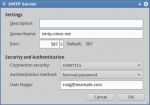The migration of all email accounts from server NC027 to server NC036 is complete. In fact, it was successfully completed at 04:00 UTC on 4 June. What followed over the next few days was an unprecedented avalanche of misinformation and red herrings that resulted in our moving the new server to another data centre (a move that took ten times longer than the previous move from the data centre where NC027 was located) where the same “problems” experienced by only some of our clients magically reappeared.
We planned the migration to have absolutely no impact on existing email configurations. We did this by pointing legacy sub-domains of the niner.net domain that named server NC027 — e.g., smtp27.niner.net — to server NC036. At the conclusion of the migration these sub-domains were indeed pointing to the new server. In other words, on Monday morning (4 June) email programs would have thought they were still downloading mail from the same server, not realising (or needing to realise) that they were in fact downloading from a new server.
However, it turned out that a significant minority of email programs were somehow misconfigured with settings that worked on the old server, but stopped working when connecting to the new server. Those clients who were using the correct settings experienced no disruption at all, and when those clients with incorrect settings corrected them on the morning of Monday the 11th, the problems were fixed instantly.
Over the rest of that week (11-15 June) we helped a few clients with some issues unique to how they use email, especially where those practices clashed with current best practices for email transmission. We also dealt with some issues of senders whose mail servers were behaving improperly, causing their emails to be blocked because they looked like spammers. This notably affected email from the ZRA, but their emails are once again flowing unimpeded.
We’re monitoring the spam filtering on the new server. Any message that the server identifies as spam will have the subject of the message prefixed to add “[SPAM]“. You can use this to configure your email program or the webmail to deal with spam automatically, by filtering it into your “junk” folder or deleting it entirely. We recommend filtering to the junk folder so that you can catch the occasional legitimate message that is misclassified as spam.
Finally, in recognition of the fact that the emergency migration of the server to a new data centre on 6 June disrupted all clients’ email, and the fact that those clients with misconfigured email programs experienced a week of disruption before the issue was identified, we will be applying a one-week (quarter month) credit to the accounts of all clients hosted on server NC036. We apologise for the difficulties caused, and will apply what was learned this time to future migrations.
Thank-you, as always, for your custom and patience.



